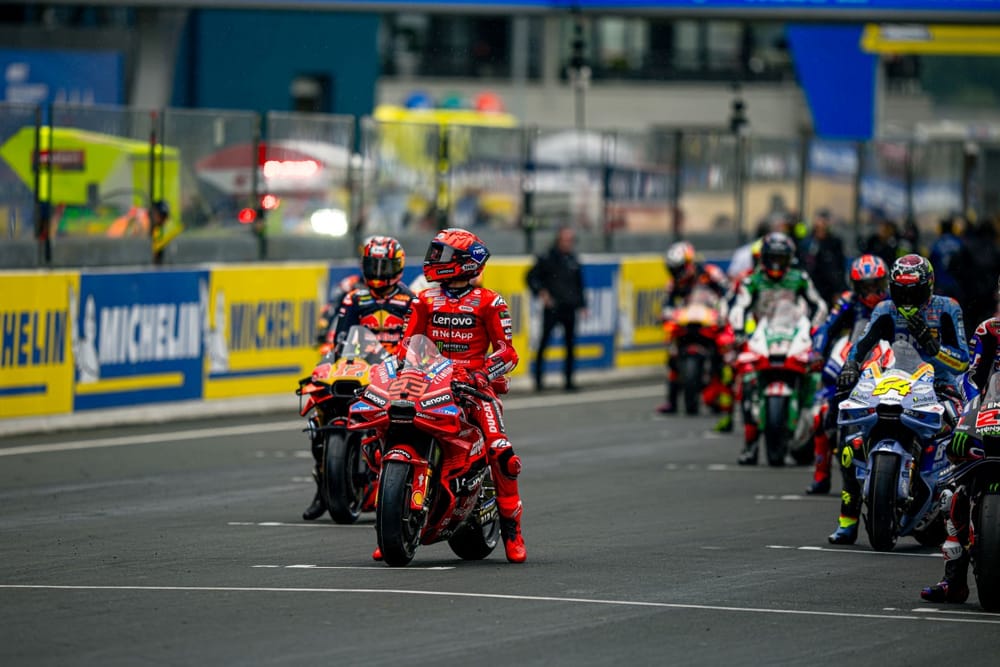Sunday’s French Grand Prix was, for much of the MotoGP grid, absolute chaos.
With multiple pitstops, switching back and forth from wet tyres to dry, and seemingly very little in the way of pre-determined strategy, there’s a fundamental lesson for teams from the debacle: that they’ve still got a lot to learn from how Formula 1 squads manage similar situations.
In the minutes before the race, the weather radar made it abundantly clear what was going to happen. Light rain had been predicted (and arrived) just as the Moto2 race ended. Then, the radar said, some more would arrive just as the MotoGP race was about to start, and would get progressively heavier over the course of the next hour.
And, it’s worth noting, this wasn’t a matter of advance forecast - it was live images from a weather radar located at the Le Mans airport literally next door to the circuit. We could see what was going to happen, yet instead of acting on that and making a strategy for the race, many instead defaulted to the norm in these circumstances.
All too often, that norm in tricky flag-to-flag conditions is simply ‘follow Marc Marquez’ - as it had been at the Circuit of the Americas in March. This time, Marquez was simply one of the many riders jockeying on pitlane entry during sighting lap of the quick start procedure, as 13 of 22 riders came in to forfeit slicks in favour of wets.
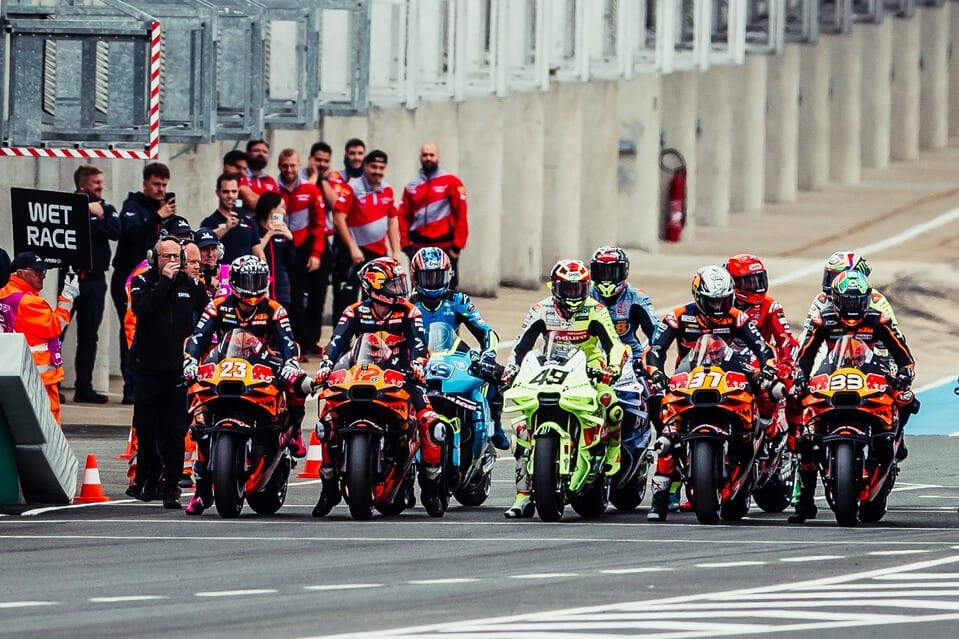
Several more wavered during the early laps of the race. Only a select few had true strategic clarity, with Johann Zarco among those - left with a clear picture of what to do thanks to conversations with his team boss and (importantly) keen amateur pilot Lucio Cecchinello.
In the midst of all this chaos, though, one thing is notable: a single MotoGP rider only switched tyres once, at the end of the first warm up lap. And he won. Zarco and Cecchinello were all over the weather radar using an aviation app on the Italian’s phone, saw what was coming, and stuck with their choice while everyone else was chasing their tails.
"We have a couple of radar applications. One is a radar application that I use in aviation," Cecchinello told TNT Sports.
“And I had seen, and I had told him [Zarco], in 20 minutes there will be more rain. So we were honestly pretty confident."
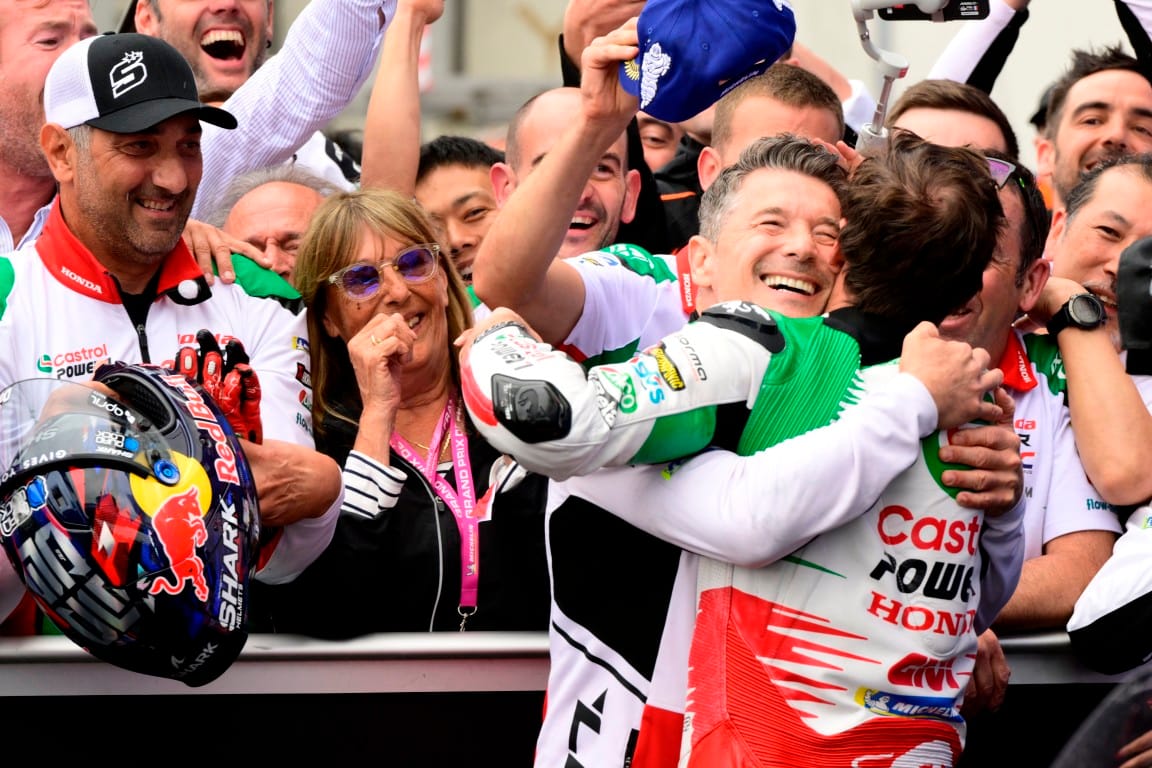
It was, of course, the perfect choice, given that it took Zarco to a frankly amazing home victory, only the second MotoGP win of his career and the first premier-class win for a Frenchman in front of French fans since 1954.
But while it showcased the strategic nous of the LCR Honda rider and his team boss, it also again exposed rivals for their relative disorganisation.
It’s the sort of thing that simply wouldn’t happen in Formula 1. Sure, the normality of pitstops, the longer races and the availability of ship-to-shore radio will always make such a call easier in the four-wheeled sport, and the risk-versus-reward ratio from staying out on the wrong tyres is completely different (something alluded to on the grid by 2025 F1 rookie Isack Hadjar).
Welcome to MotoGP Isack Hadjar 🤝
— TNT Sports Bikes (@bikesontnt) May 11, 2025
The F1 star is enjoying his time at Le Mans this weekend 🏎️ #MotoGP | #FrenchGP pic.twitter.com/8HPxhKl6ZX
But MotoGP has always been behind the curve in terms of team strategy, with none of the squads employing a dedicated strategist the way that F1 teams do, instead leaving the call on things like tyres down to the rider, albeit with team manager, crew chief and track analyst input.
Sunday proved that there’s room for such a role, and showed again that MotoGP factories that invest countless Euros and hours into finding just 0.01s of performance seem to have a blind spot when it comes to situational performance in races like these.
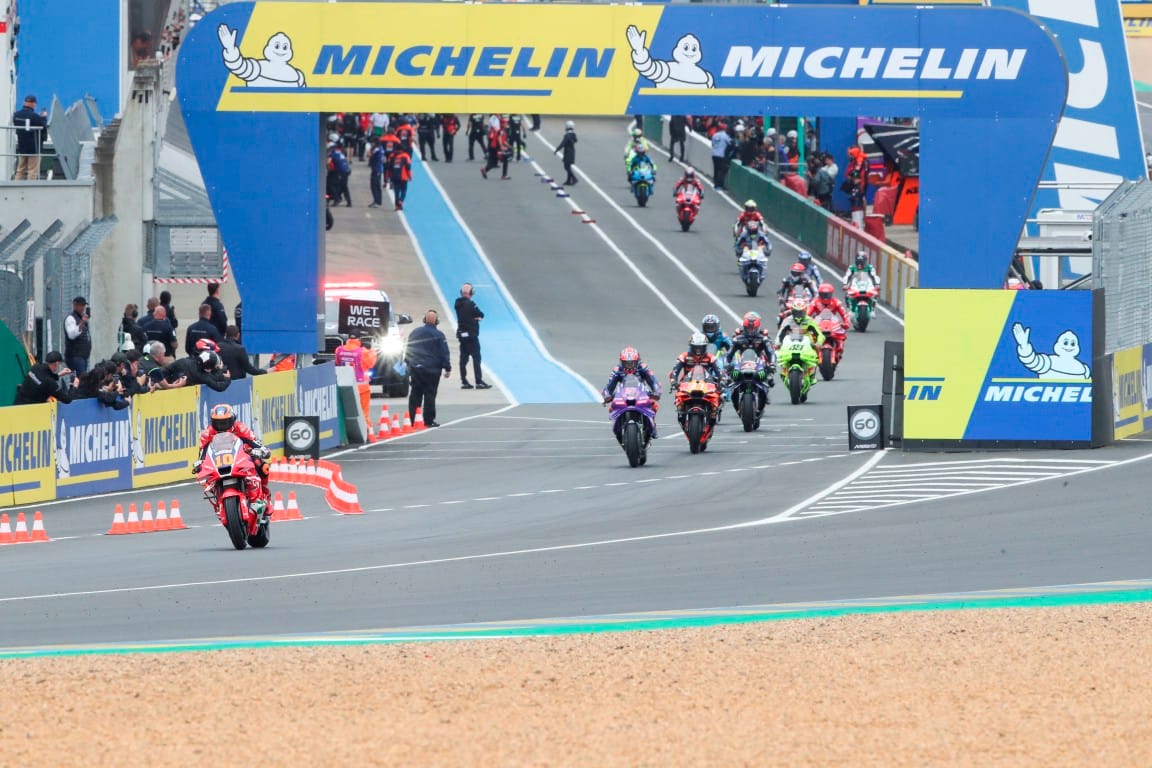
It's not the first example - remember a nearly-championship losing strategy blunder by Jorge Martin at Misano last year, the pitstop for wet tyres on a dry track. Could that be directly attributed to the fact Martin and Pramac did not have a clear plan of action in mind? And remember, of course, this year's COTA race and the fact a fair few of the grid's riders clearly didn't know the exact tyre/bike change rules very well at all?
Franco Morbidelli, who crashed on slicks in the rain in the French GP, was asked after the race about whether there had been a pre-race sitdown between himself and his VR46 team over what to do.
"It's really difficult to make a strategy," he said. "I mean, you need to wing it.
"And go according to the conditions. OK, there are some guys that 'wing it' better - like Zarco, he did a really funky strategy, because in the beginning the track was dry.
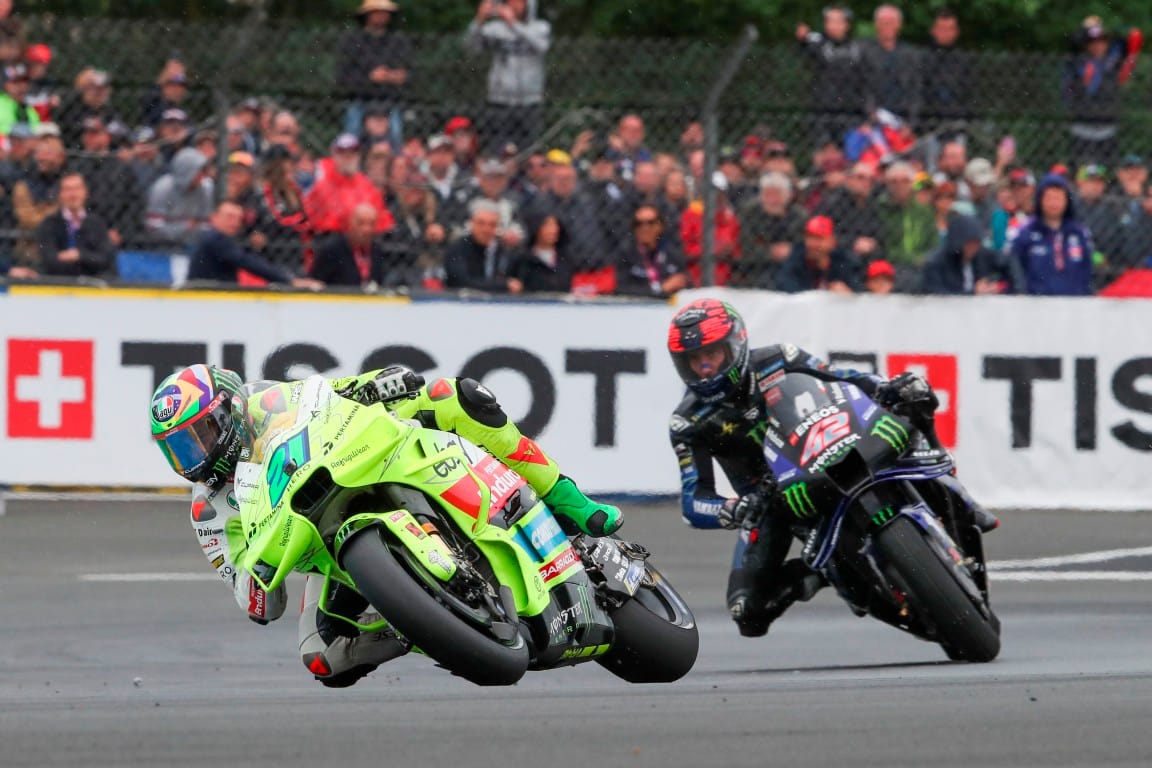
"Again, somebody decided that it was going to rain. So Zarco's strategy was the right one. Definitely crashing is not the right strategy!"
Morbidelli is right to a point. Some level of 'winging it' will always be part of it. And a rider can only know for sure what's best for them in the current track conditions when they're out riding in those conditions.
But - crucially - Zarco did not 'wing it'. That's the whole point. That's the whole reason he won.
And, among others, there's clearly just too much 'winging it' going on for what's at stake.


